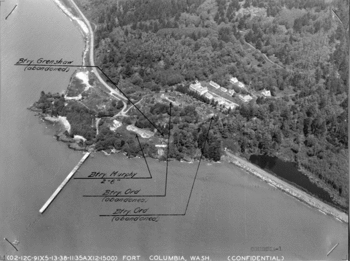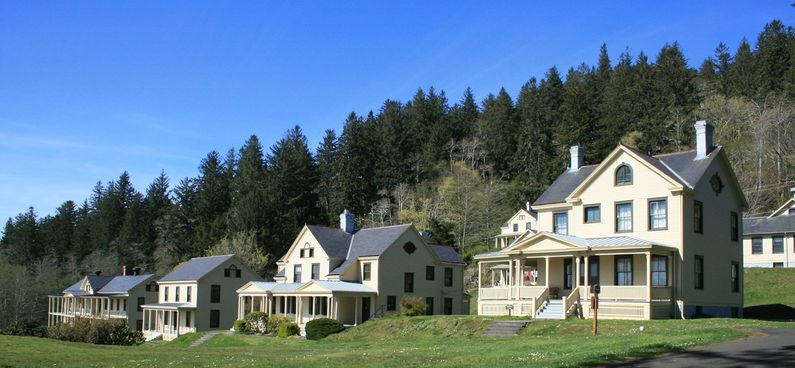Fort Columbia
|
Fort Columbia (1896-1947) - Fort Columbia was built as an Endicott Period coastal defense fort to complete the triangle of protection of the Columbia River mouth. Gun battery construction began in 1896 and was completed four years later in 1900. The fort is named after the Columbia River. Fort Columbia was declared surplus in 1947.
Endicott Period (1890-1910)Part of the Harbor Defense of the Columbia. Fort Columbia is a small fort but at a very strategic location, being built on top of a hill. Because of the location, the batteries commanded an excellent vantage point over the Columbia River at various elevations. However, it was also very limited in space, resulting in the batteries being built relatively close together. There was enough land however to build garrison housing, another artillery battery during World War II, and a mine casemate building when it took over mining operations of the Columbia River mouth from Fort Stevens in 1937. The fort operated like a small town due to its remote location. It had a hospital, firehouse, theater, jail, and a generator plant. The men stationed there were more than just soldiers. They were also bakers, barbers, gardeners, and musicians. During the world wars, the population of Fort Columbia exceeded that of the neighboring communities of Chinook, McGowen, Megler, and Knappton. The fort relied on regular shipments of Army issue food. These large deliveries required a dock and storehouses. The soldier's meals were supplemented with food produced locally such as milk (the fort had its own dairy cow), butter, eggs, and fresh vegetables. Although the soldiers' lives were highly regimented, they still had some time for fun. Soldiers enjoyed many of the same activities in small towns today. The baseball team played neighboring towns and the other two forts on the Columbia River mouth. When dances were held, local women were invited and trucked to the fort. Occasionally, the troops were entertained by famous actresses and comedians. After serving in three wars and 51 years of continuous active military service, Fort Columbia was declared surplus in 1947 and was transferred to the custody of the state of Washington on 12 May 1950.
World War II (1941-1945)
Current StatusNow Fort Columbia Historic State Park with 12 historic wood-frame buildings still standing and numerous gun emplacements. Fort Columbia is one of the few intact coastal defense sites left in the United States. Battery 246 has period guns and carriages mounted although they are not the originals. All other fort batteries have no period guns or carriages in place
Sources:
Links:
Fortification ID:
Visited: 22 Mar 2008, 15 June 2008, 27 Aug 2005 Picture Gallery
| |||||||||||||||||||||||||||||||||||||||||||||||||||||||||||||||

































